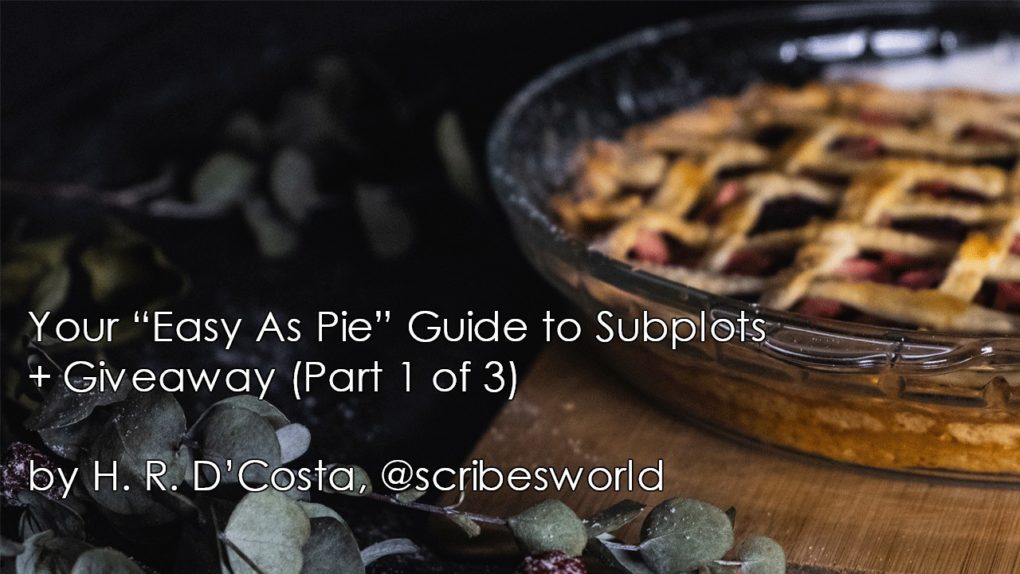by H.R. D’Costa, @scribesworld
Have you ever tried to make a pie crust from scratch?
In my experience, when you press the dough into the pie pan, there’ll be areas where the dough is thick and knobby, almost like the hills of a tea plantation…
…and there’ll be areas where the dough is thin.
So, so thin.
Working with the main plot of your novel can be like that.
There’s only so much of it to go around.
After a certain point, if you try to extract more out of it, you’ll stretch it too thin. You’ll end up with plot points that are bland and repetitious.
Savvy writers recognize this.
They don’t try to extract more than their main plot can give.
Instead, they take a break from the main plot. Like bakers who take scraps of dough to fill in holes in a pie crust, these writers fill their pages with other material.
This is where subplots—secondary stories that are subordinate to the main plot—come in. (Sometimes, a subplot is referred to as the B-story, while the main plot is referred to as the A-story.)
Subplots are one of the best ways to get your novel to the right length, without stretching your main plot too thin.Continue reading

